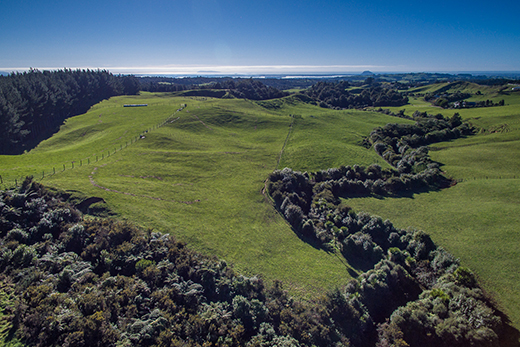Sixty-nine kilometres of waterway margins have been protected from stock access, surpassing the Bay of Plenty Regional Council's target of 50km.
It's one of several waterway protection targets in the Te Awanui Tauranga Harbour catchments that were exceeded during the 2015/16 year, according to a new a report.
A fenced and planted waterway protected from stock access in the upper Tauranga Harbour catchment, near Whakamarama.Photo: BOPRC
Tabled at last week's Regional Direction and Delivery Committee meeting, the report also highlights the regional council's success in signing up 42 new environmental management plans in the Tauranga Harbour catchments over the past year.
'That's 42 new properties where landowners have signed up for assistance to take better care of land, water and wildlife in their catchment,” says Tauranga Harbour catchments manager Sarah Omundsen.
Regional Council first developed 16 sub-catchment action plans for the hill country and lowlands between the Kaimai Mamaku ranges and Tauranga Harbour in 2012. The plans outlined priorities and targets for protecting waterways and wildlife areas.
Since then, council has supported hundreds of landowners to exclude stock access from a total of 216 kilometres of waterway margins, reduce run-off risk from 1400 hectares of erosion-prone land, and improve wildlife habitat at 58 sites, around the Tauranga Harbour and surrounding hill-country.
'It will take some time for land-use change to translate into visible improvements in water quality and harbour health, but we're generally now seeing stable or improving trends in water quality indicators such as suspended sediment, clarity, nitrogen, phosphorous and faecal contamination.”
Further improvements are also expected as a result of the regional council's collaborative efforts with tangata whenua and the Western Bay of Plenty District and Tauranga City councils, she says.
This includes supporting the Western Bay council in replacing its aging septic tank systems at Ongare Point and Te Puna West with wastewater reticulation schemes.
'And together with Tauranga City Council we've got regular auditing and compliance programmes in place to prevent storm water pollution from industrial areas and new subdivisions.”
While a new Tauranga Moana Iwi Management Plan was lodged by Ngāti Ranginui, Ngāi te Rangi and Ngāti Pūkenga with all three councils last month, which will help guide BOPRC's harbour care efforts in future.
'It complements the work we're already doing with hapū and Māori landowners to restore mauri (life force) and protect cultural values at sites like Motuopae Island and Rangataua Bay.”
For more information about Tauranga Harbour visit the Bay of Plenty Regional Council's website at: www.boprc.govt.nz/taurangaharbour.
The 2013-2016 action plan progress reports for each of the 16 sub-catchments that drain into Tauranga Harbour are also available at www.boprc.govt.nz/catchmentaction.

Tauranga Harbour as seen from above Welcome Bay. Photo: BOPRC



1 comment
Oh how wonderful?
Posted on 30-09-2016 11:19 | By Crash test dummies
Wow really, but meanwhile the sewerage from the Te Maunga oxidation ponds is still flowing into the Harbour well above the limit of the expired RMA consent. No consent for three years and at least three times the maximum allowed if it was still valid. Don't thin RBOP have really achieved a lot now have they?
Leave a Comment
You must be logged in to make a comment.